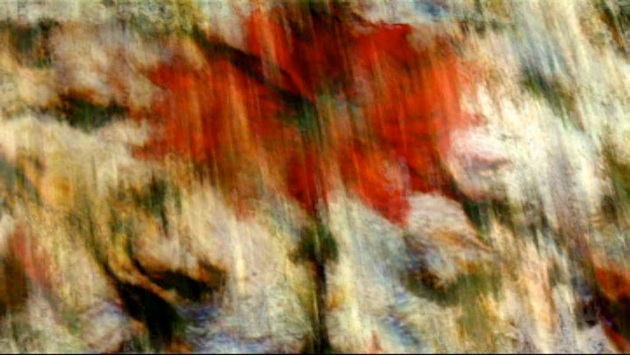Music & Image
in Kaija Saariaho’s Work

The music of Kaija Saariaho is often considered visual, because it proceeds from a musical poietic which is producing strong images during listening.
Musicologists have been interested by the fact that she first carried parallel studies at the Sibelius Academy and at the Fine Arts School, that she has been always drawing a lot, and that the graphical dimension is important in her composition, for instance in her compositional sketches.
Moreover, she collaborated regularly with artists. She has a sustained collaboration in particular with the painter Raija Malka, which resulted in several exhibitions for which she composed musical environments.
They have also realized together the show From the Grammar of Dreams
for which the artist made the scenography, or the cd-rom Prisma, dedicated to the music of Saariaho, which I have conceived, and which grants a large part to the visual aspect directed by Malka.
Carolyn Carlson with the ballet Maa, and Peter Sellars with the opera L’Amour de Loin, on a libretto by Amin Maalouf, have succeeded in staging
these musical images. Sellars, after the staging of her second opera, Adriana Mater, premiered in Opéra Bastille in March 2006, has also worked on the oratorio La Passion de Simone, inspired by the life and work of philosopher Simone Weil, premiered during the fall 2006 in Vienna. And the movie and theater director François Girard recently staged Émilie, her third opera, premiered at Opéra de Lyon then at the Amsterdam Opera in March 2010. All are insisting one way or the other on the visual power of this music.
The idea to conceive “visual concerts”, associating an artistic approach to the music of Kaija Saariaho, comes quite naturally, and many projects are being developed all around the world, sometimes without the implication of the composer.
The visual concert that we conceive on the music of Saariaho, for example the show Voix/Espace with Rachid Safir and Solistes XXI, proceeds at the contrary of a long and close collaboration, based on a deep knowledge of the musical universe of the composer.
With Pierre-Jean Bouyer, Isabelle Barrière and François Galard, who are realizing the images, we are developing through the Image Auditive Project, an aesthetic of the relation music/image which attempts to be particularly respectful of the music.
Before everything else, image must not prevent to listen to the music, as it is unhappily often the case in similar experiences.
It should not superimposed on the music, or at the contrary illustrative of the music.
Neither should it proceed from the commentary on or about the music.
It must then realize itself through its own composition, articulated formally with musical composition, proceeding from the same musical ideas or techniques, but developed in another sensitive dimension, without pleonasm, nor arbitrary antagonism, in dynamic and evolving interaction.
I have supervised and/or realized a large part of the electronics of Kaija Saariaho’s works, and I then conceive precisely the visual part in the continuity of her electronic work. In the same way that often, in her pieces, music unfolds in space, in particular with the recurrent usage of
spatialization around the audience, in these visual concerts/shows, music unfolds into image.
One becomes the extension of the other.
The composition of image constitutes itself as the continuation of instrumental and electronic composition by other means.
Jean-Baptiste Barrière
